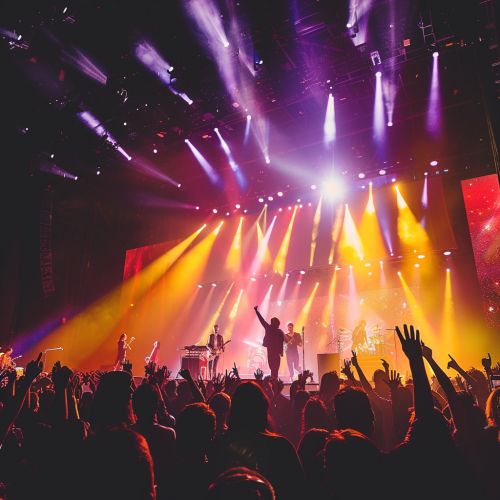Music of the 2010s
Overview
The Music of the 2010s was characterized by a variety of musical styles, reflecting the influence of various genres and the continued development of digital technology in music production and distribution. This decade saw the rise of new music genres, the evolution of established ones, and the resurgence of styles that had been popular in previous decades.


Musical Styles and Genres
The 2010s saw the continued popularity of pop, hip-hop, and electronic dance music (EDM), while also witnessing the rise of new genres such as trap music and the resurgence of folk and country music.
Pop Music
Pop music continued to dominate the charts in the 2010s. The genre was characterized by catchy hooks, relatable lyrics, and high-energy performances. The decade also saw the rise of K-pop, a genre originating from South Korea, which gained global popularity due to its unique blend of music, fashion, and choreography.
Hip-Hop
Hip-hop saw significant growth in the 2010s, with the genre becoming more mainstream and commercially successful. The decade was marked by the rise of trap music, a subgenre of hip-hop characterized by complex hi-hat patterns, tuned kick drums, and lyrical content often focused on urban life and culture.
Electronic Dance Music
The 2010s was a pivotal decade for EDM, with the genre gaining mainstream recognition and commercial success. The decade saw the rise of various subgenres such as dubstep, house, and techno, each with its unique sound and aesthetic.
Folk and Country Music
The 2010s also saw a resurgence in the popularity of folk and country music, with artists blending traditional elements of these genres with contemporary musical styles and themes.
Technological Impact
The 2010s were marked by significant advancements in digital technology, which had a profound impact on the music industry. The rise of streaming services, social media, and digital music production tools changed the way music was created, distributed, and consumed.
Streaming Services
The rise of streaming services such as Spotify and Apple Music revolutionized the music industry in the 2010s. These platforms provided a vast library of music at the fingertips of consumers, changing the way music was distributed and consumed.
Social Media
Social media played a crucial role in the music of the 2010s, providing a platform for artists to connect with fans, promote their music, and build their brand. Platforms such as YouTube, Instagram, and Twitter became essential tools for artists and record labels.
Digital Music Production
The 2010s saw a significant increase in the use of digital music production tools. Software such as Ableton Live, Logic Pro, and Pro Tools allowed artists to create music in a digital environment, leading to new sounds and styles.
Cultural Impact
The music of the 2010s had a significant cultural impact, influencing fashion, film, television, and social movements. Music festivals and live performances became an integral part of youth culture, while music videos and visual albums redefined the relationship between music and visual art.
